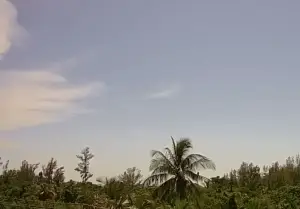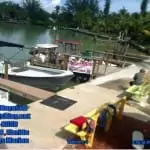

Sanibel Fishing & Captiva Fishing, November 21, 2017: Pompano!
 Captiva Fishing Report, Tuesday, November 21: Pompano, Inshore, Catch & Release; Red Tide Report (Caloosahatchee freshwater runoff, but no red tide); and more fishing reports from other areas and Captains.
Captiva Fishing Report, Tuesday, November 21: Pompano, Inshore, Catch & Release; Red Tide Report (Caloosahatchee freshwater runoff, but no red tide); and more fishing reports from other areas and Captains.
Tuesday, November 21: Pompano running in the bay! Please also visit the Sanibel, Fort Myers, Florida Fishing Report and Cuban Fishing sites. Better water moving north of Sanibel up through Captiva & North Captiva.
Please click calendar at the upper right or call 239-472-8658 to book a Sanibel & Captiva Islands, Boca Grande or Fort Myers fishing guide trip or shelling charter.
![Pompano, Fly Fishing, Sanibel Fishing & Captiva Fishing, Sanibel Island, Tuesday, November 21, 2017, [File Photo - Friday, March 10, 2017].](https://captivafishing.net/wp-content/uploads/2017/03/Fly-Fishing-Pompano-2-3-9-17-e1489181670291.webp)
2017, [File Photo – Friday, March 10, 2017].
It can be found along the western coast of the Atlantic Ocean, depending on the season, and is popular for both sport and commercial fishing. The Florida city of Pompano Beach is named after the Florida pompano.
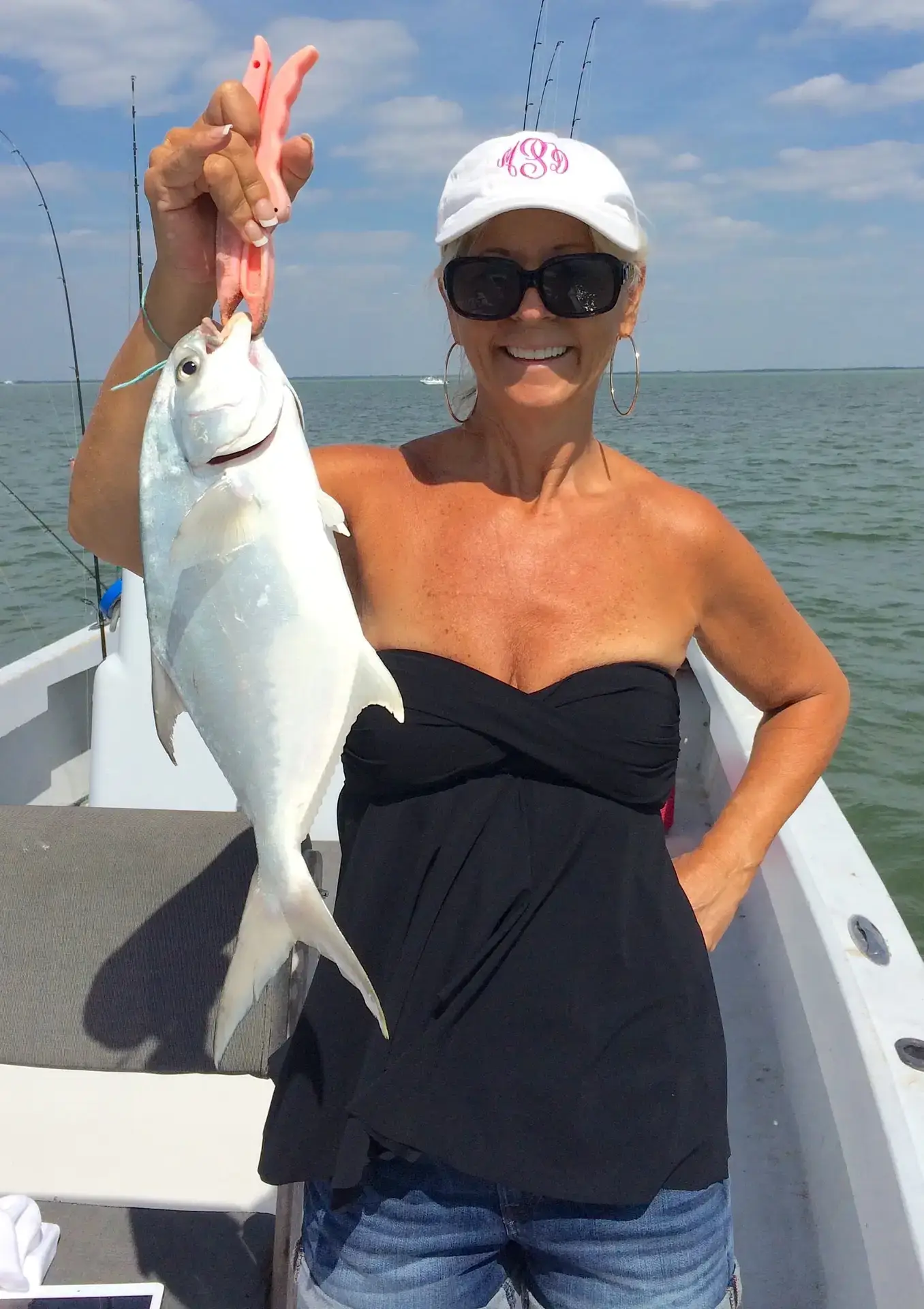
Most Florida pompano caught weigh less than 3 lb (1.4 kg) and are less than 17 in (43 cm) long, though the largest individuals weigh 8–9 lb (3.6–4.1 kg) and reach lengths up to 26 in (66 cm).
The different kinds of pompano include African, Cayenne, Florida and Irish. The Florida pompano (T. carolinus) is part of the jack family. It is very similar to the permit (Trachinotus falcatus). It has a deeply forked tail and is blue-greenish silver with yellow on the throat, belly, and pelvic and anal fins. The first dorsal fins are low, with about six separate spines. The first spine may be reabsorbed in a larger fish. The second lobes on the dorsal and anal fins have a lower anterior.[3] There are 20-24 anal fin rays. It is a compressed fish with a deep body and a blunt snout.
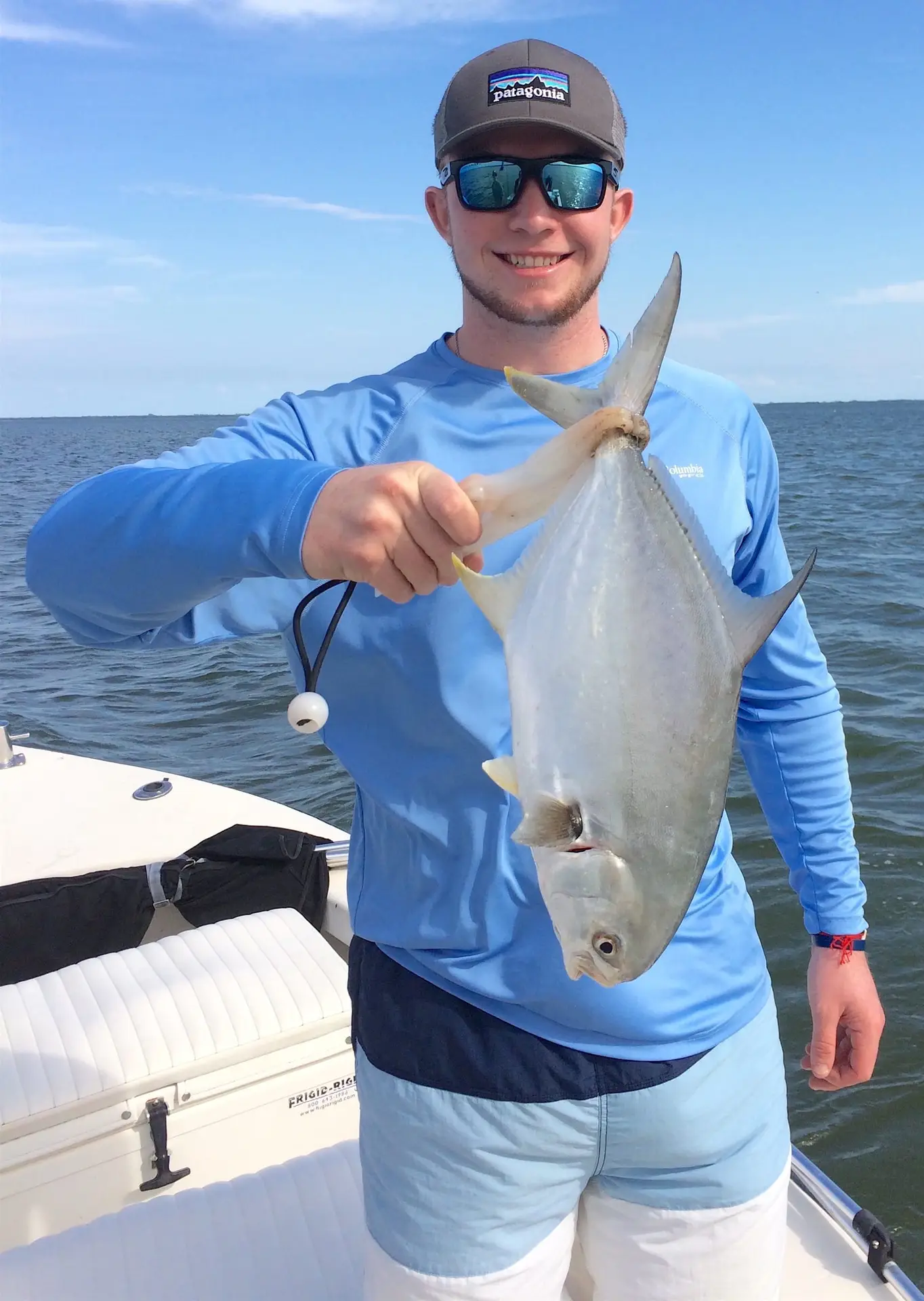
The adult Florida pompano is typically found in more saline areas and relatively warm waters (70-89 °F), so it migrates northward in the summer, and toward the south in the fall.[6] Despite its name, the range of the Florida pompano extends from Massachusetts to Brazil, but it is more common in areas near Florida. During the summer, it can be found near Sebastian, Cape Hatteras, and the Gulf of Mexico. It is more common near oil rigs, Palm Beach, and Hobe Sound during the winter. It can also be found near the Virgin Islands year round.

Its habitat is surf flats, and it tends to stay away from clear water regions, such as the Bahamas.[7] Pompanos are very fast swimmers and live in schools. They are bottom feeders. They have very short teeth and feed on zoobenthos and small clams.
The Pompano is a popular food fish. Chefs like it because the fillets are of even thickness, which aids in cooking. A popular dish created in New Orleans, called “Pompano en papillote,” is wrapped in parchment paper with a white sauce of wine, shrimp, and crabmeat, and then steamed.[8]
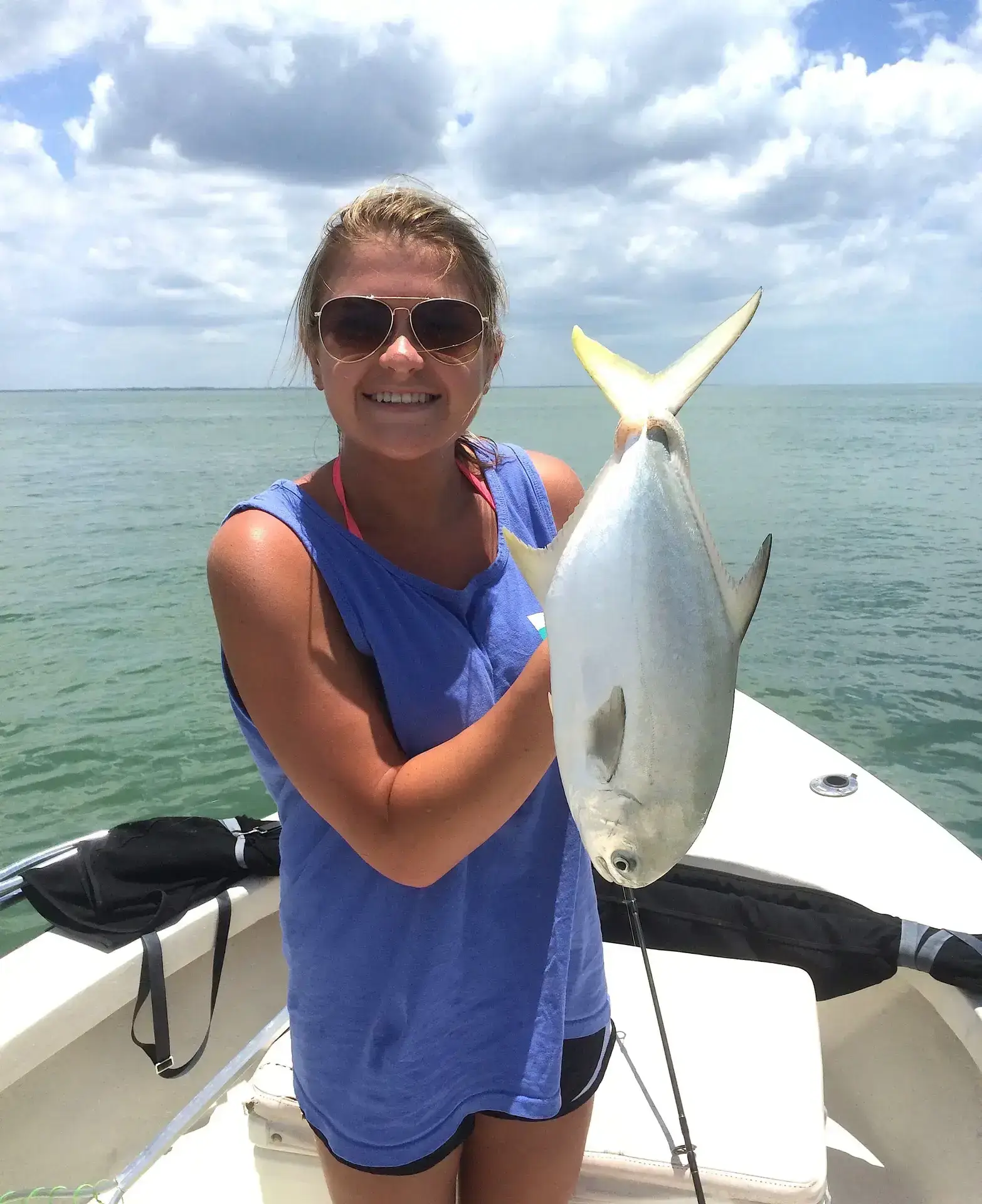
The pompano’s flesh is oily and looks white and opaque. Its diet yields a rich but mild flavor. Fresh fillets can cost $17 or more.[9] Demand has encouraged the use of aquaculture to increase supply.
The pompano supports an important commercial and recreational fishery. Florida pompano are commercially fished in all states on the East Coast from Virginia to Texas, with Florida producing over 90% of the annual harvest. Harvesting occurs mostly along Florida’s western coast, with some harvesting on the eastern coast and in the Banana and Indian Rivers. Between 1994 and 2006, it commanded dockside prices of more than $3 per pound of whole fish weight.[11]

Individually, Florida pompano are caught on light jigs and popping corks. They are very active on the line, testing light tackle beyond what their weight would suggest.[8] They bite near oil rigs in the winter.
From 1997-2000, the fishing mortality rates increased sharply. However, an extensive study by the Florida Fish and Wildlife Conservation Commission concluded, as of 2005, the population of Florida pompano was healthy and the fishery was sustainable with current practices.[5][8] ” Please see more information here.
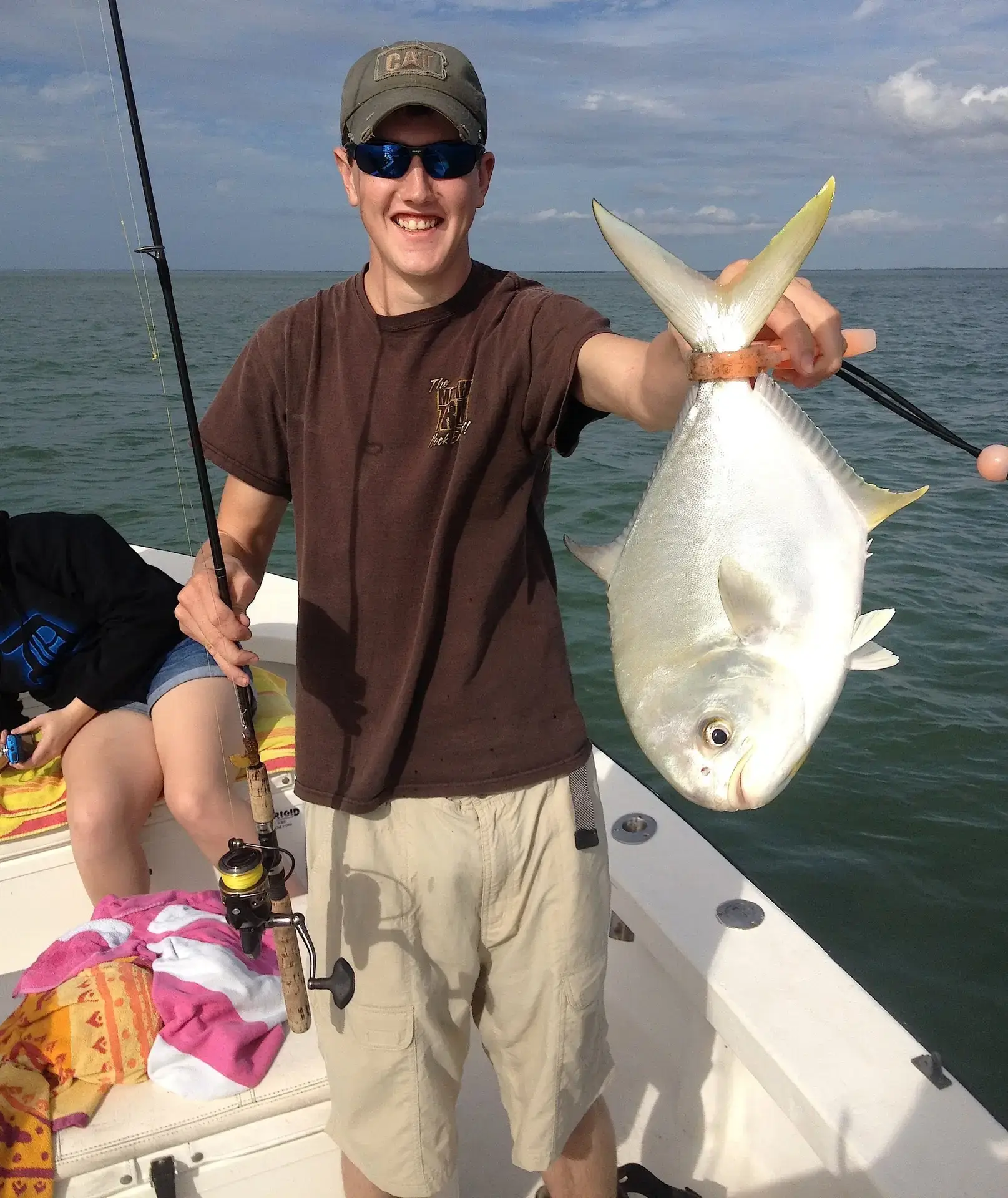
Please click here to Book A Charter or call 239-472-8658 and here for Live Sanibel Traffic Cams. Redfish, Click here for College Of Fishing Hats & Apparel.
We’re located in Castaways Marina, Santiva, Sanibel Island, just before the Blind Pass bridge to Captiva Island.

After a fierce storm, Turner Beach, the beach adjoining the Pass, is frequently covered with a bounty of shells from Olives to Fighting Whelks to the more common Conchs. The fishing is also renowned with sharks in the summer, tailing redfish on the bayside flats and snook under and off the Blind Pass bridge. Because Turner Beach faces Westward, the sunsets are spectacular and a popular viewing point for residents and visitors alike.
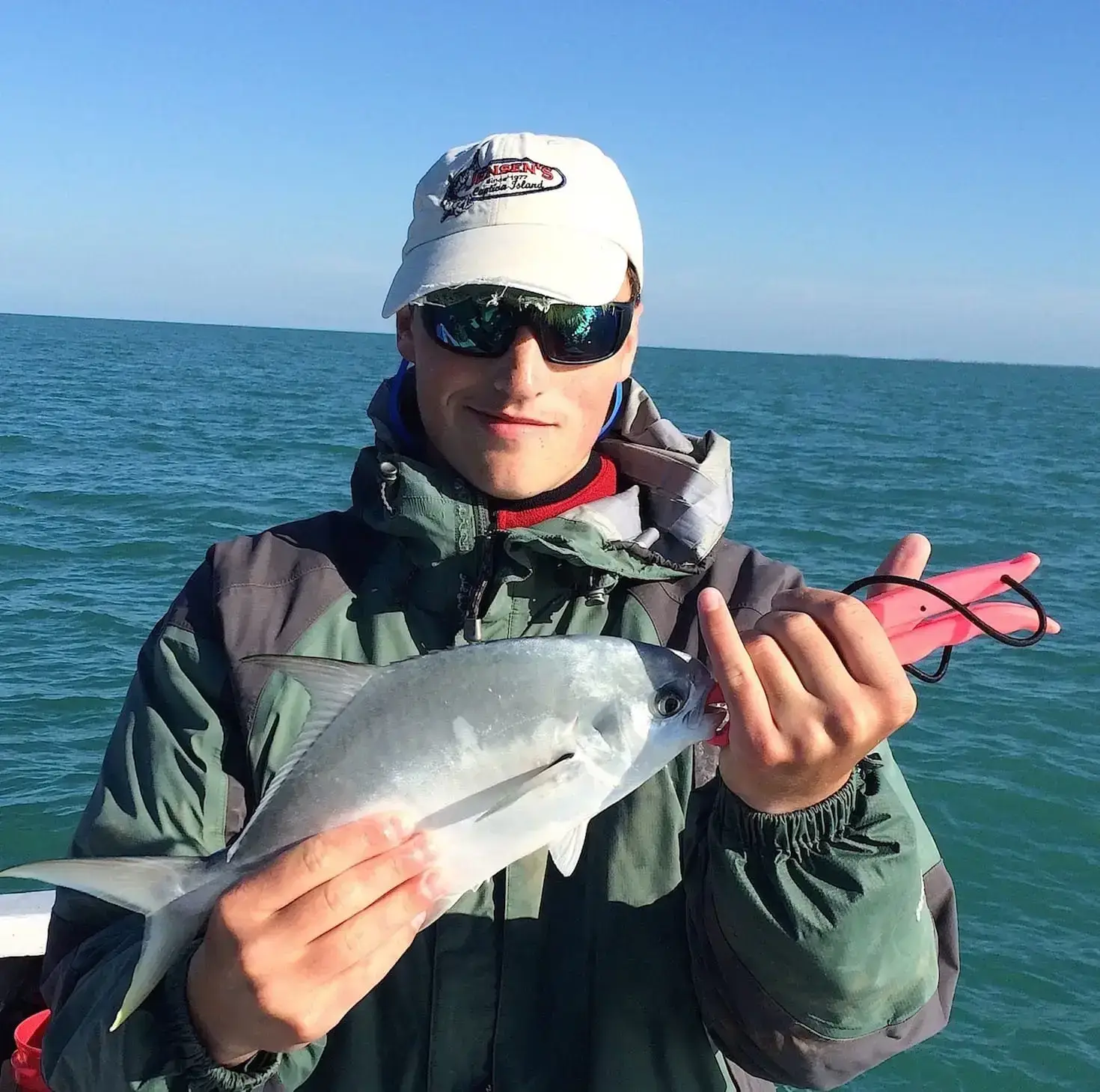
And you can like us on Facebook.
Fair winds and following seas,
Captain Joey Burnsed ~ please click calendar at the upper right or call 239-472-8658 to book a Sanibel & Captiva Islands, Boca Grande or Fort Myers fishing guide trip or shelling charter.




